How to Change Brake Pads on a Car
Learn how to change brake pads on a car today. Full picture guide with step by step instructions on how to remove brake pads and replace them with new ones.
STEP 1 to 4: How to Remove Tires and Jack Up Vehicle
STEP 5 to 8: How to Remove Calipers and Replace Rotors
RELATED: How to Check Brake Pads
If you have followed Part 1 and Part 2 of my guide on how to change brake pads and rotors, you would have removed your tires and replaced your brake rotors. Let's move on and learn how to raplace brake pads on a car.
9. Remove Brake Pads
Use brake cleaner to spray down the caliper. This will not only clean it but also it will keep all of the brake dust particles from getting into your nose. These can be toxic. If you don’t spray them down then you need to be wearing a dust mask.
Remove the brake pads. After the pads are removed it is time to compress the brake caliper piston. When learning how to change rotors I didn’t realize that there were several different styles of pistons and some of them require special tools to compress.
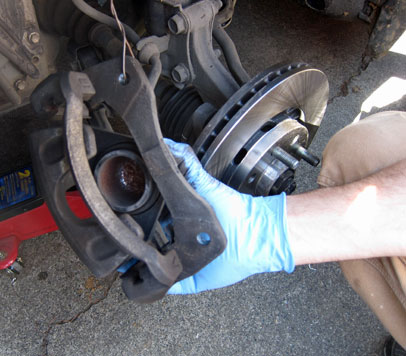
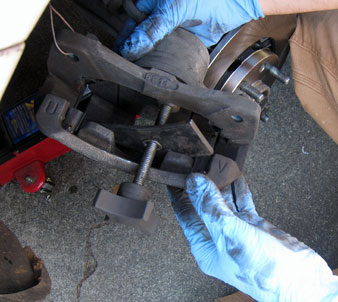
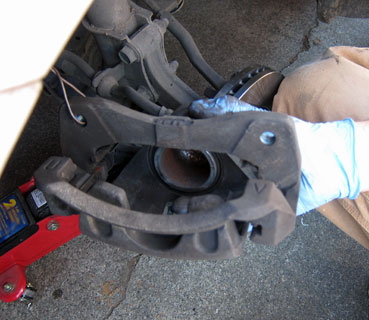
Be sure to check your repair manual to see if any special tools are required. Most of the time you can just use a universal brake caliper compressor. Sometimes I leave the brake pad that goes against the piston there so I can use it to press the piston in.
10. Lubricate Brake Pads
After you have checked them out you need to lubricate the back of the brake pad and the sides with brake lubricant. Basically anywhere that the caliper comes into contact with the brake pad will need some lubrication. If you skip this step, you will likely have a brake squeaking problem.
Be sure to install new brake clips. These clips are located in the brake calipers and they hold the brake pad in the caliper. I have reused old ones without a problem, but I don’t like to do it. Most brake pads come with new ones anyway so it would be silly not to use them.
11. Change Brake Pads
After the pads are installed into the calipers you are ready to slide the caliper assembly onto the rotor. Be sure that you remove the mechanics wire from the caliper assembly. They should slide right onto the brake rotor. If they do not then you likely did not compress the caliper piston far enough into the caliper. You will need to remove the pads and compress it as far as it will go.
After you get the caliper onto the brake rotor, you need to install the bolts that hold the caliper on.
To do this, simply start one of the bolts into its hole, then get the other bolt started before you tighten them. These bolts should be torqued to the manufacturer's specification. This spec can be found in this online service manual. Some people tighten them to where they “feel right” but you will be taking a chance of the bolts backing out and the caliper falling off.
12. Install Tires and Lug Nuts
After the caliper is on and the bolts are torqued, all that is left is to install the tires and torque the lug nuts.
I use a large torque wrench and I always torque them to the manufacturers spec. I have seen more than one wheel come off and I have been in a car when the wheel came off because the lug nuts were not torqued properly. It is also important to go back and re-torque them after a few days of driving to be sure that they are still tight enough.
Once again you can get torque info for your bolts on from a repair manual that is specific to your vehicle - Click here for my reviews of the best and popular auto repair manuals.
After this is done you need to get in your car and step on the brakes. They will probably be very soft for the first couple of pushes but should firm up. After that happens take it for a test drive to be sure that they work properly.
That’s all there is to my guide to changing brake pads. It’s a pretty easy thing to do overall and you can save yourself some money by just doing it yourself.
If you know anyone else who want to learn how to change brake pads, please introduce them to this website. Everything here has been tested by my years of experience as a certified mechanic.
If you still have any unresolved vehicle problems or questions, you can ask an auto mechanic online. For expert answers specific to your vehicle's make and model, I recommend JustAnswer Car. They have a large pool of certified mechanics to answer your questions for a small fee and you can also browse their answers to other users for free.
Recommended Tools and Parts for Changing Brake Pads & Rotors
Brake Pads: Click here to find one for your vehicle make and model
Brake Rotors: Click here to find one for your vehicle make and model
Brake Caliper Compressor: Lisle 25750 Dual Piston Caliper Compressor
Brake Cleaner: 3M 08880 High Power Brake Cleaner
Brake Lubricant: Permatex 24125 Ceramic Extreme Brake Parts Lubricant
Disposable Towels: Scott Shop Towels
Floor Jack: Torin T83006 3 Ton Hydraulic Trolley Floor Jack
Jack Stands: Torin T43002 3 Ton Jack Stands
Mechanics Wire: Dorman 9-741 Gauge Coil Mechanics Wire
Pry Bar: Tradespro 835682 Pry Bar Set
Screwdriver Set: Cremax Magnetic Screwdriver Set 10 Piece Set
Socket Wrench Set: Dewalt DWMT73804 34 Piece Socket Set
Suction Gun: Lumax LX-1185 Suction Gun with Vinyl Hose
Torque Wrench: Tekton 24335 1/2-Inch Drive Click Torque Wrench
Wheel Chocks: FloTool 11930MI Heavy Duty Wheel Chocks
Work Gloves: Wells Lamont 167L Heavyweight PVC Gloves
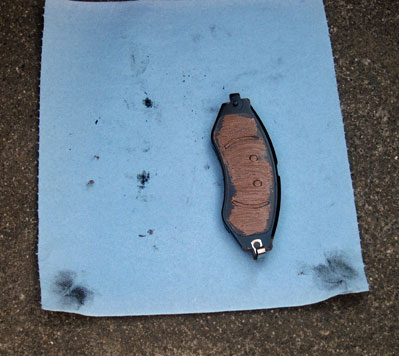
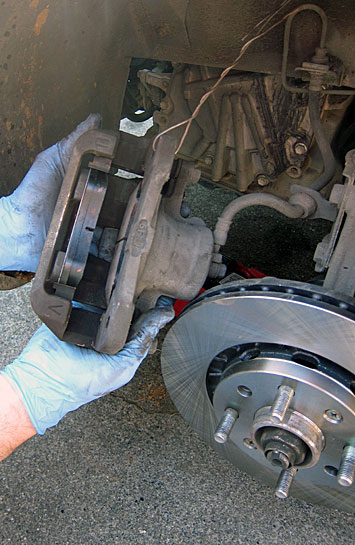
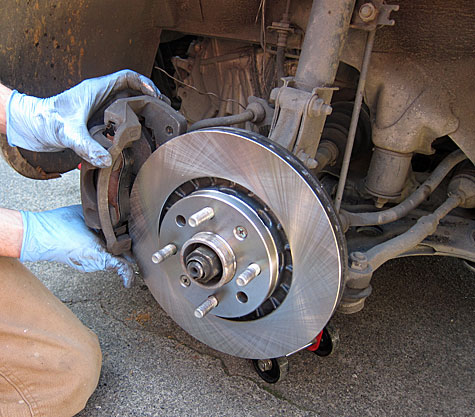
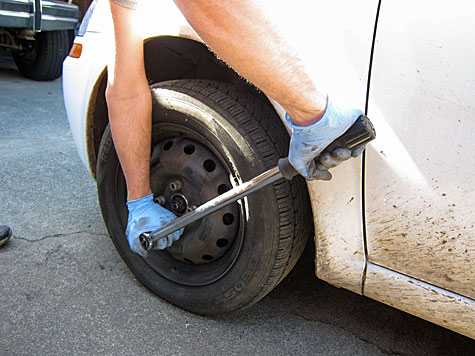
New! Comments
Have your say about what you just read! Leave me a comment in the box below.